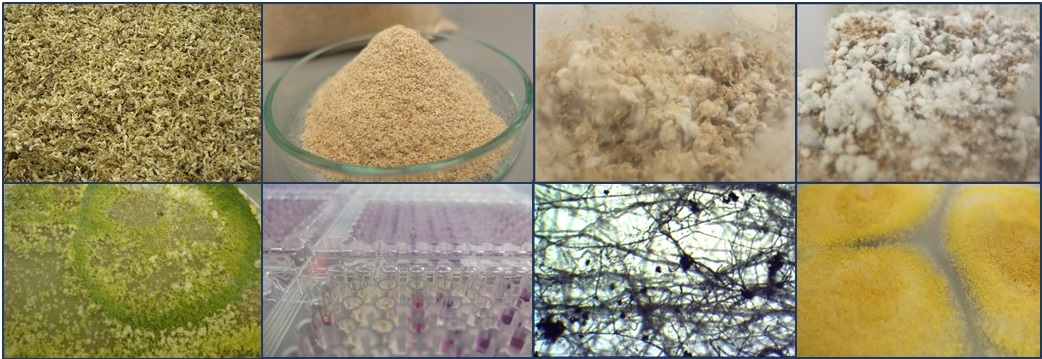Leader: dr hab. Magdalena Frąc, prof. IA PAN
Team: mgr Agata Gryta; mgr Karolina Oszust; dr Anna Siczek, Nina Bilińska-Wielgus, Jacek Panek
Soil and organic waste due to the huge microorganisms diversity can be a source of strains for biotechnology application. These selected microbial strains can be used to develop new technologies and products. However, there is a need to characterize these microorganisms, especially their metabolic abilities.
The aim of the task is to assess the genetic diversity and metabolic profile of microorganisms isolated from soil and organic waste, with particular emphasis on intraspecific variability of fungi in various culture conditions.
The first stage of the study will concern the isolation of microorganisms from three types of organic waste. The proposed research will include the characteristics of the metabolic profile of fungal communities in the waste using Biolog FF microplates, fungal strains isolation and the assessment of their genetic and functional diversity.
The main goal of the task will include the following specific objectives:
- identification of fungi using conventional microscopic and modern molecular biology techniques;
- assessment of fungal communities level physiological profile present in the waste and catabolic potential of selected fungal strains using Biolog FF microplates;
- evaluation of the genetic diversity of the selected strains using analysis of amplified fragment length polymorphism (AFLP).
The assessment of genetic differentiation, activity and functional diversity will be carried out after culturing of fungi on solid media containing various organic waste (substrates): dried beet pulp, wheat bran and sawdust. In order to assess the impact of the substrates on the fungal catabolic potential the study will be performed by solid state fermentation (SSF).
The results of the study will be useful to determine the relationship between the catabolic profile of fungal communities and individual strains, genetic and functional diversity and waste used for fungal culture in SSF.
The proposed research are both cognitive and applicable. On the one hand, the research will provide information about the intraspecific fungal diversity present in soil and organic waste, particularly in relation to their catabolic abilities important in the waste degradation. On the other hand, the results may be useful to assess the possibility and expedience of organic waste utilization as a component of solid state fermentation of filamentous fungi.
References:
- Behera S.S., Ray R.C., 2015, Solid state fermentation for production of microbial cellulases: recent advances and improvement strategies. International Journal of Biological Macromolecules, In Press, doi:10.1016/j.ijbiomac.2015.10.090.
- Hansen G.H., Lübeck M., Frisvad J.C., Lübeck P.S., Andersen B., 2015, Production of cellulolytic enzymes from ascomycetes: comparison of solid state and submerged fermentation. Process Biochemistry, 50, 9, 1327-1341.
- Novelli P.K., Barros M.M., Fleuri L.F., 2016, Novel inexpensive fungi proteases: Production by solid state fermentation and characterization. 2016. Food Chemistry, 198, 119-124.
- Soliman S.A., El-Zawahry Y.A., El-Mougith A.A., 2013, Fungal biodegradation of agro-industrial waste. Cellulose – Biomass Conversion, Prof. John Kadla (Ed.), ISBN: 978-953-51-1172-6, InTech, DOI: 10.5772/56464. Available from: http://www.intechopen.com/books/cellulose-biomass-conversion/fungal-biodegradation-of-agro-industrial-waste.













